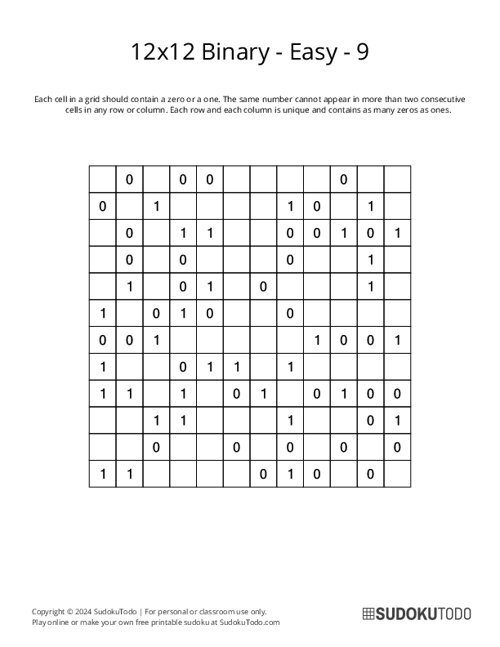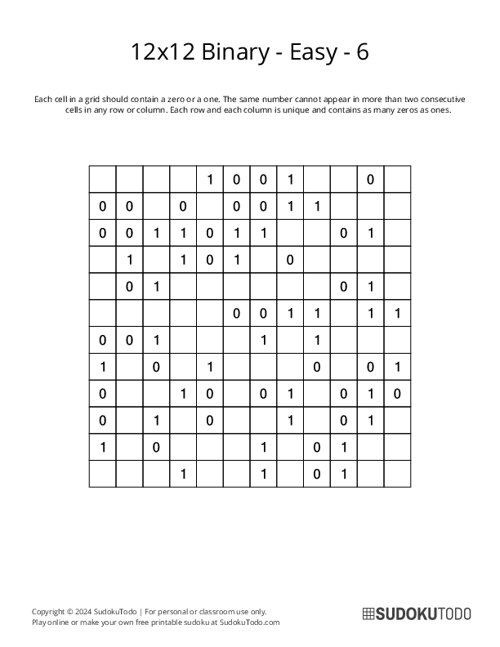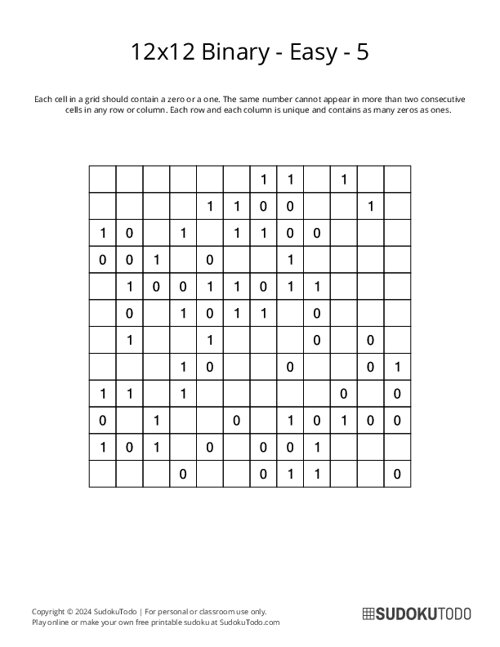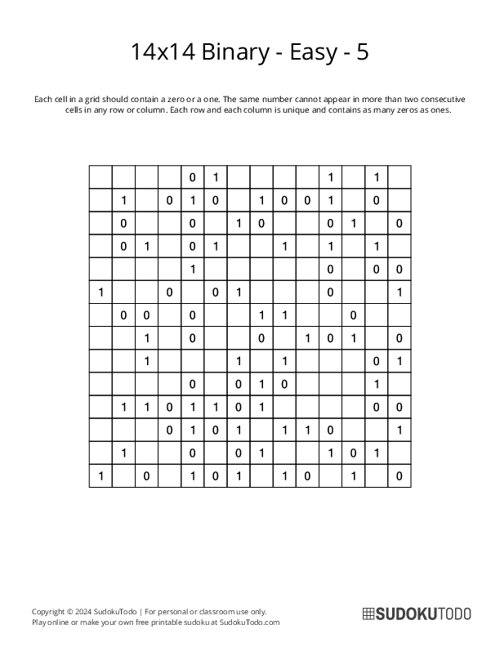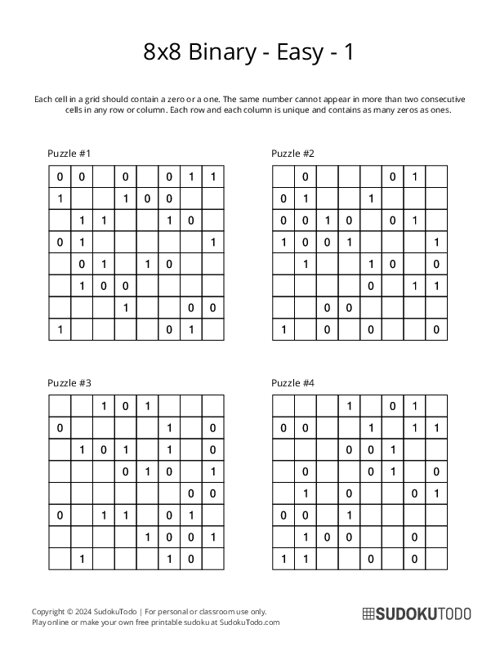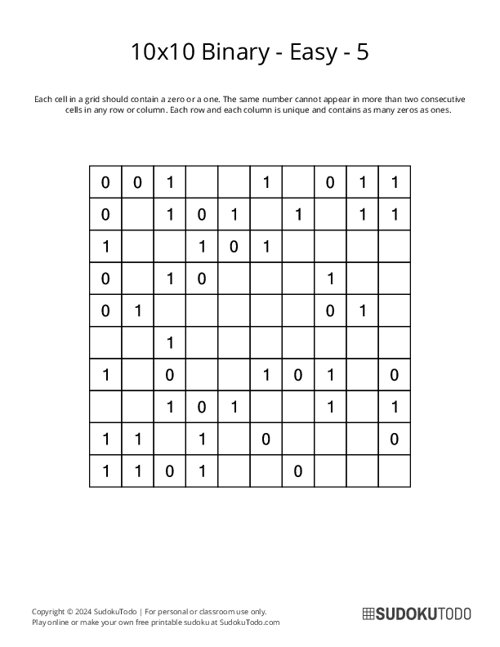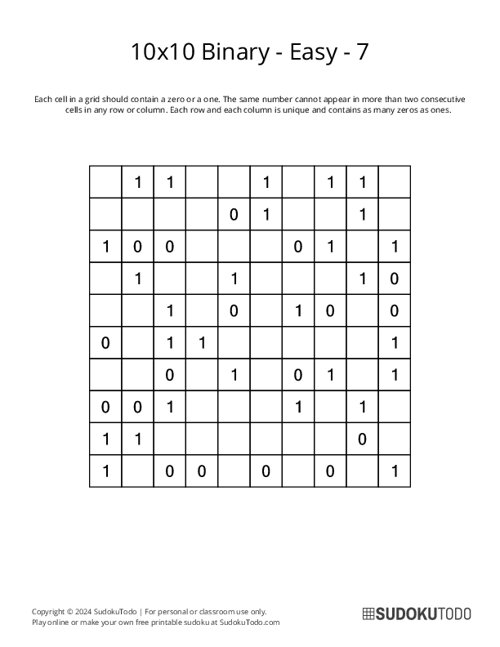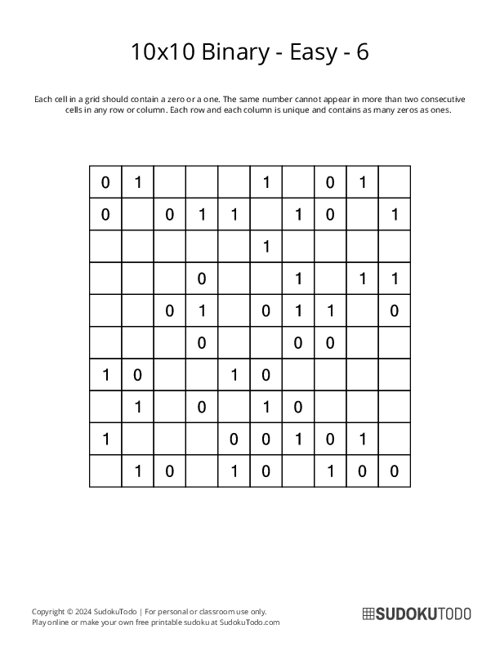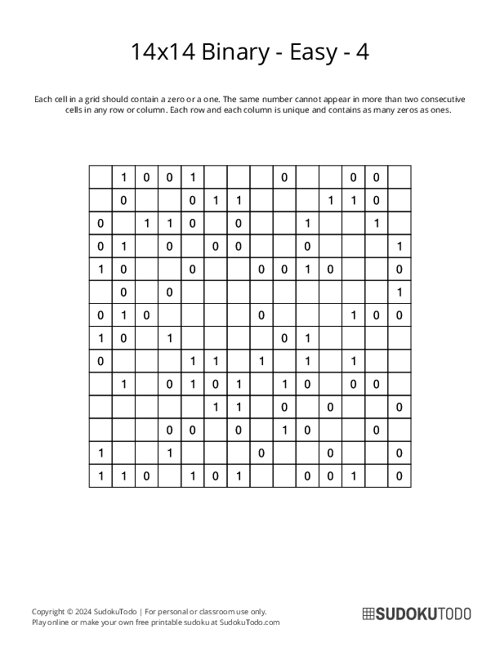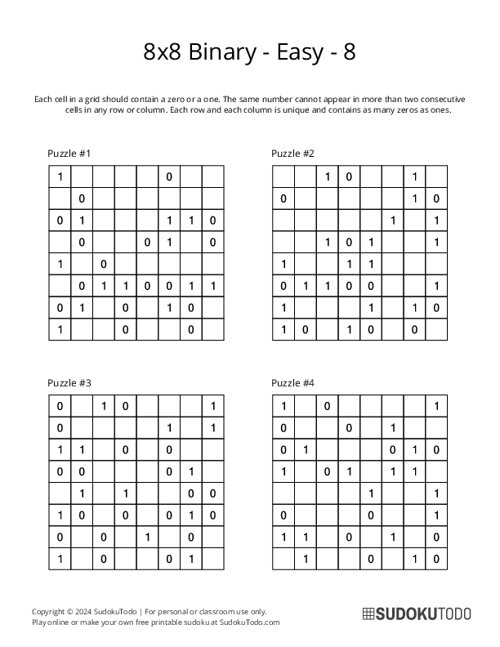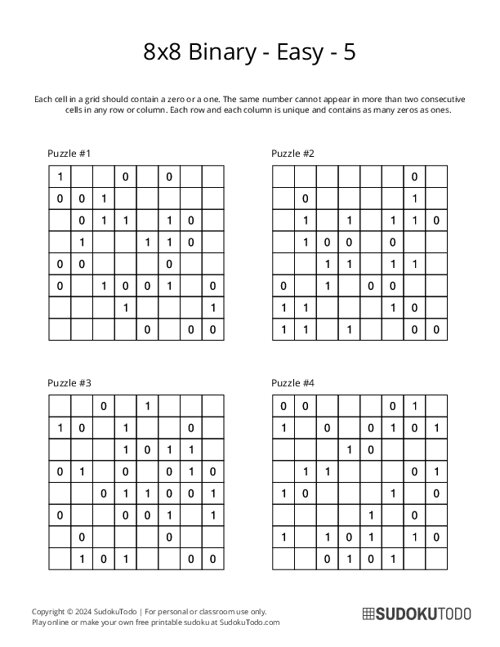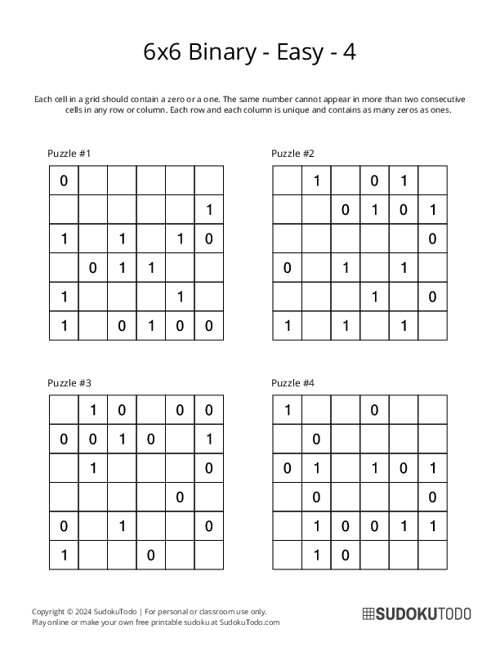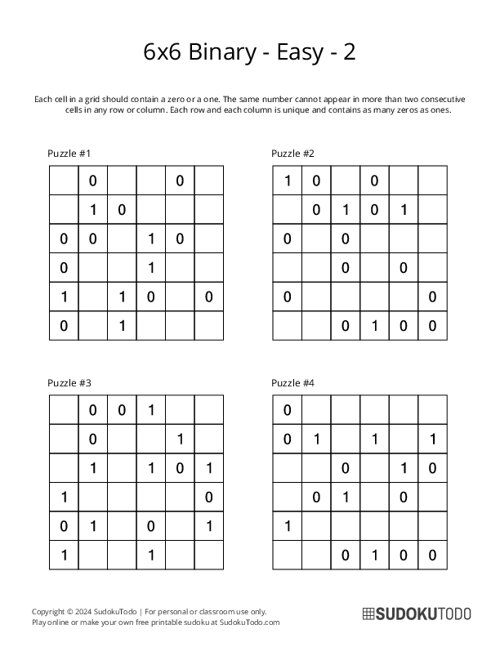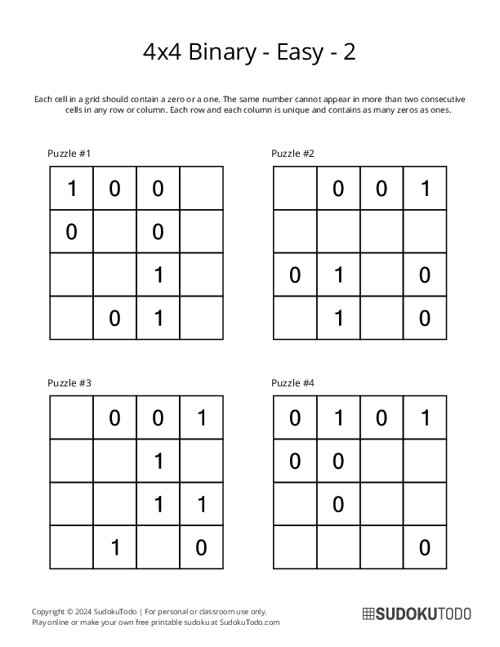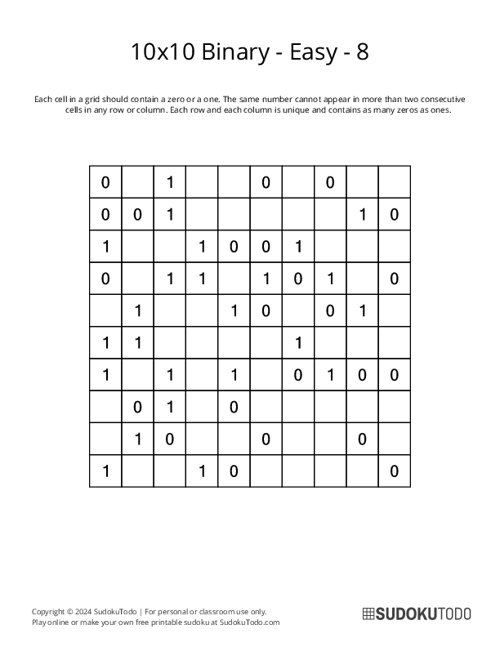Printable Sudoku
- Alphabet
- Battleships
- Binary
- Bridges / Hashi
- Chain Sudoku
- Consecutive
- Cross Sudoku
- Flower Sudoku
- Frame Sudoku
- Futoshiki
- Galaxies
- Greater Than
- Hitori
- Jigsaw Sudoku
- Kakuro
- KenKen
- Killer Sudoku
- Kropki Sudoku
- Little Killer
- Magic Squares
- Nonogram
- Odd Even Sudoku
- Outside Sudoku
- Rossini Sudoku
- Samurai Sudoku
- Sandwich
- Skyscraper
- Slitherlink
- Sohei Sudoku
- Star Battle
- Sudoku
- Sudoku for Kids
- Sudoku Mine
- Sudoku XV
- Sujiken
- Tripledoku
- Tripod Sudoku
- Twodoku
- Vudoku
- Windmill
Special Variations
Play / Solve
- Home»
- Binary
Binary Puzzles
Download free printable binary puzzles featuring a variety of difficulty levels and layouts. These logic puzzles are a great way to challenge your brain, improve problem-solving skills, and have fun. Simply download, print, and start solving with a pen or pencil!
Showing 1-15 of 55 records
Sort by:
12x12 Binary - Easy - 9
12x12 Binary - Easy - 6
12x12 Binary - Easy - 5
14x14 Binary - Easy - 5
8x8 Binary - Easy - 1
10x10 Binary - Easy - 5
10x10 Binary - Easy - 7
10x10 Binary - Easy - 6
14x14 Binary - Easy - 4
8x8 Binary - Easy - 8
8x8 Binary - Easy - 5
6x6 Binary - Easy - 4
6x6 Binary - Easy - 2
4x4 Binary - Easy - 2
10x10 Binary - Easy - 8
About Binary Puzzles
The Binary Puzzle is a logic-based game played on a grid, where cells are filled with 0s and 1s. The objective is to complete the grid while following specific rules. Binary Puzzles are available in various grid sizes, typically 4×4, 6×6, 8×8, 10×10, and 12×12.
How to Play
- Layout: The puzzle consists of a grid of cells, with some cells already filled with either zeros or ones.
- Binary Only: Each square in the puzzle can only contain a 0 or a 1. No other digits are allowed.
- Equal Number of Zeros and Ones: Each row and each column must contain an equal number of zeros and ones. For example, in an 8×8 grid, each row and column must have exactly four 0s and four 1s.
- No Repeating Neighbors: You can't have more than two of the same digit (0 or 1) next to each other in a row or column. For example, a sequence of three consecutive zeros (000) or ones (111) is not allowed, either in rows or columns.
- Uniqueness: No two rows or two columns can be identical. Each row and column must have a unique combination of 0s and 1s.
Solving Tips and Techniques:
Although the specific rules may differ based on the puzzle, here are some common elements and strategies.
- Start With Simple Rows or Columns:: Look for rows or columns that are nearly complete (e.g., five out of six cells in a 6×66×6 grid are filled) and complete them by applying the rules.
- Avoid Consecutive Triples: If two adjacent cells in a row or column are both 1 (e.g., "11"), the following cell must be 0 (e.g., "110"). Similarly, if two consecutive cells are both 0 (e.g., "00"), the next cell must be 1 (e.g., "001").
- Balance Rows and Columns: Keep track of 0s and 1s already placed in each row and column, then fill the remaining cells to maintain balance.
- Prevent Duplicates: Examine the grid for any rows or columns that could become identical based on how they are filled. Modify the placement of zeros and ones to maintain their uniqueness.
With regular practice, Binary Puzzles can be a fun and interesting way to improve your ability to think logically and recognize patterns. As you work through these puzzles, you'll sharpen your problem-solving skills, which can help you in many areas of life. Plus, they challenge your brain, making it a great activity to keep your mind active and sharp.
